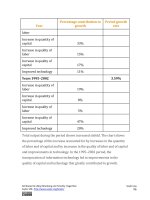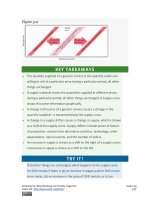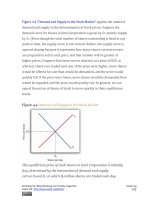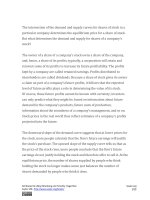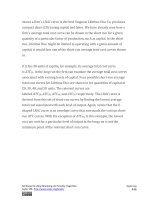Authors libby rittenberg 884
Bạn đang xem bản rút gọn của tài liệu. Xem và tải ngay bản đầy đủ của tài liệu tại đây (383.06 KB, 1 trang )
Chapter 17
International Trade
Start Up: Trade Winds
Rapid increases in the flow of goods and services between vastly different
nations and cultures have changed what people eat, how they dress, and
even how they communicate with one another. For you, increased trade
has meant greater choice of what to buy and often lower prices.
Look through your room. Chances are it is full of items from all around the
world. The relatively free trade that exists today provides you with
expanded choices. No one forced you to buy that shirt from India or that
CD player from Japan. Presumably you bought them because you preferred
them to other shirts and CD players you might have bought, perhaps
because they had certain characteristics—style, color, perceived quality, or
price—that you favored.
Your gains are being experienced worldwide because the winds of
international trade have blown generally freer in the past decades. Nations
all over the world have dramatically lowered the barriers they impose on
the products of other countries.
One region that was once closed to virtually all trade but is now open is
Eastern Europe and the countries that made up the former Soviet Union. A
key part of these countries’ attempts to create market capitalist economic
systems has been the opening of their borders to international trade.
Attributed to Libby Rittenberg and Timothy Tregarthen
Saylor URL: />
Saylor.org
884
